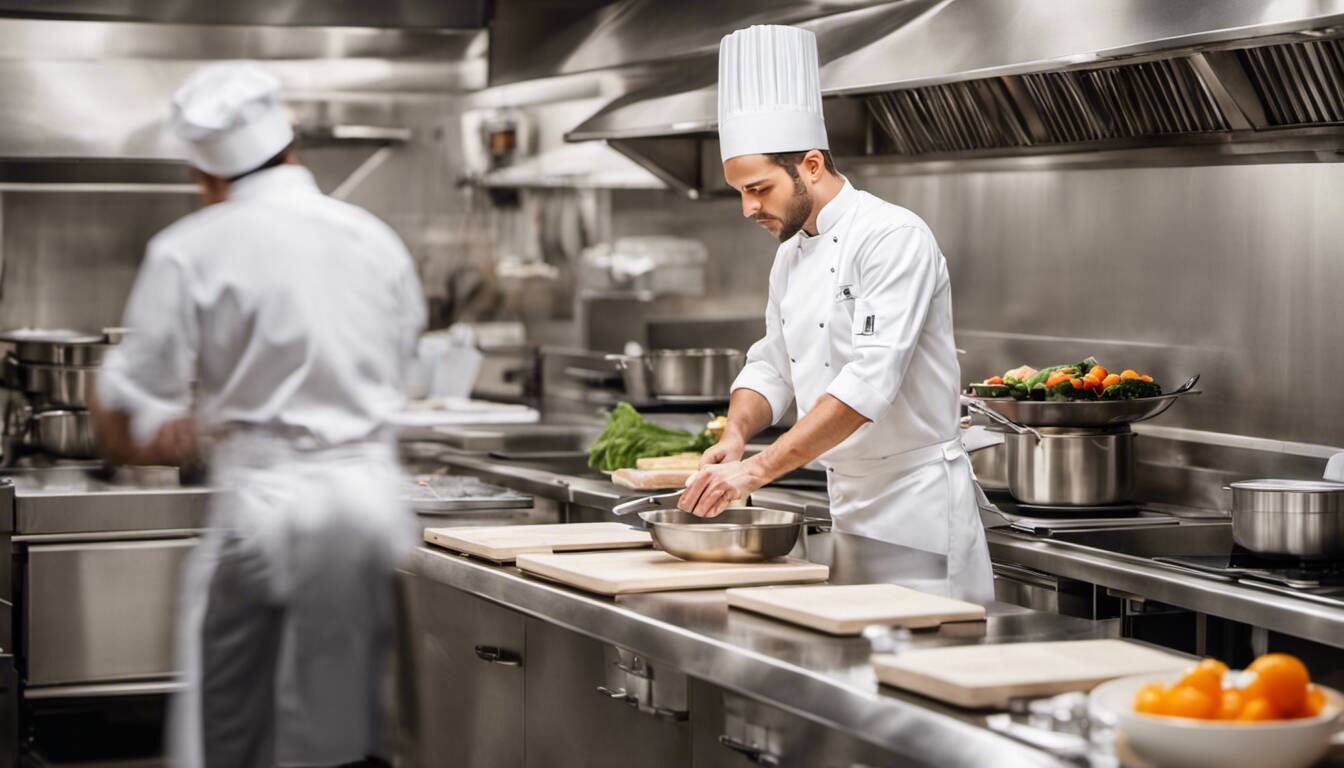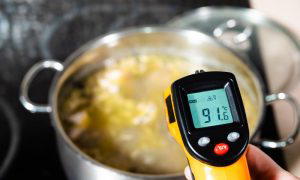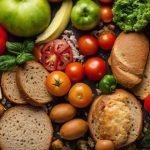Food safety is crucial for turning your kitchen from a risk zone to a safe haven. Ignoring it can transform meals into disease carriers. This article provides critical guidelines for preparing safe and delicious food. Learn vital steps to protect against foodborne illnesses.
Food safety is crucial because consuming contaminated or unsafe food can lead to serious illness and death. Good food safety practices help prevent the spread of harmful bacteria, viruses, and other pathogens in the food supply chain. Maintaining safe food handling and preparation practices also helps protect vulnerable populations, such as young children, elderly individuals, pregnant women, and those with weakened immune systems.

Food Safety Regulations and Standards
When it comes to ensuring health and safety in your kitchen, understanding and adhering to food safety regulations and standards is of utmost importance. These regulations exist to protect consumers from the risks associated with improper food handling, preparation, and storage. By following these guidelines, you not only safeguard your customers’ well-being but also maintain your business’s reputation and success.
Food safety regulations can vary based on the country or region you operate in, but they generally revolve around a set of fundamental principles. The most prominent international system for food safety management is the Hazard Analysis Critical Control Point (HACCP) system. It provides a framework for identifying, evaluating, and controlling hazards at critical points throughout food production.
In addition to HACCP, various governmental bodies and industry organizations establish specific regulations and standards that businesses must comply with. For example, the Food and Drug Administration (FDA) sets guidelines under the Food Safety Modernization Act (FSMA) in the United States. These guidelines cover Good Manufacturing Practices (GMPs), sanitation procedures, allergen control, labeling requirements, and more.
Let’s say you own a restaurant that handles raw meat products regularly. To comply with food safety regulations, you must ensure proper raw meat storage at appropriate temperatures to prevent bacterial growth. You must also implement measures to prevent cross-contamination between raw meat and other ingredients during preparation.
Moreover, these regulations may extend beyond handling food safely, including employee hygiene practices, equipment maintenance, pest control measures, and record-keeping procedures. It is crucial to familiarize yourself with the specific regulations that apply to your establishment and stay updated on any changes or additions.
Now that we understand the importance of food safety regulations and standards, let’s dive deeper into understanding laws and guidelines that govern the safe handling of food.
Understanding Laws and Guidelines
Understanding the laws and guidelines governing food safety is essential when it comes to maintaining a safe and healthy kitchen environment. Laws and guidelines are a framework for food businesses to follow, ensuring they meet the required standards and protect consumers from potential health hazards.
Food safety laws can vary depending on your location, but they generally focus on aspects such as proper storage, preparation, cooking temperatures, hygiene practices, and labeling requirements. These regulations are in place to prevent illnesses caused by contamination or mishandling of food products.
Understanding these laws and guidelines allows you to implement appropriate practices in your kitchen. It empowers you to train your staff on proper techniques for handling food safely, including proper handwashing procedures, preventing cross-contamination, and maintaining clean and sanitary work surfaces.
For instance, one common guideline is the “two-hour rule,” which states that perishable foods should not be left at room temperature for more than two hours. Adhering to this guideline helps prevent bacterial growth that could potentially lead to foodborne illnesses.
It’s important to remember that these laws and guidelines are in place for good reason – to protect both your customers’ health and the reputation of your business. By understanding and following them diligently, you can establish a culture of food safety that instills confidence in your customers.
By now, we have gained a deeper understanding of food safety regulations and standards and the importance of understanding laws and guidelines. In the next section, we will explore another crucial aspect of ensuring health and safety in your kitchen: the role of regular inspections.
Role of Regular Inspections
Regular inspections play a vital role in ensuring the safety and quality of food in your kitchen. These inspections are conducted by health department officials or other food safety agencies to assess whether your establishment complies with the necessary hygiene standards and regulations. The primary purpose of these inspections is to identify potential risks or hazards that could compromise the food’s safety.
During an inspection, the officials thoroughly examine various aspects of your kitchen, including storage areas, cooking equipment, refrigeration systems, food handling practices, and overall cleanliness. They also review records and documentation related to food handling processes and employee training. The inspection uses standardized checklists and guidelines specific to your jurisdiction.
It’s important to note that inspections are not meant to be seen as a form of punishment but rather as a preventive measure to ensure public health and safety. By detecting issues early on, inspections help prevent outbreaks of foodborne illnesses and maintain consumer trust in your establishment.
So, what happens if an inspector identifies violations during the inspection?
Best Practices for Safe Food Handling

When it comes to safe food handling practices, there are several key guidelines that every kitchen should follow. These practices can significantly reduce the risk of foodborne illnesses and help maintain high hygiene standards within your kitchen environment. Let’s explore some best practices:
- Proper handwashing is one of the most basic yet essential practices in preventing cross-contamination. Hands should be washed thoroughly with soap and warm water for at least 20 seconds before handling food items, especially after using the restroom, touching raw meat, or handling garbage.
- Separate cutting boards: To avoid cross-contamination between different types of foods (such as raw meats and fresh produce), it’s crucial to use separate cutting boards for each category. Color-coded cutting boards can be used to designate specific boards for specific foods.
- Safe storage: Store raw meat, poultry, and seafood in sealed bags or containers to prevent drippings from contaminating other foods in the refrigerator. Keep perishable foods at appropriate temperatures to slow bacterial growth and maintain freshness.
- Cooking temperatures: Use a food thermometer to ensure that different types of food are cooked to the correct internal temperature. This helps eliminate harmful bacteria and ensures the food is safe.
- Avoiding cross-contamination: Clean and sanitize all utensils, equipment, countertops, and surfaces that come into contact with raw or uncooked foods before using them again with ready-to-eat foods. This prevents the transfer of bacteria and other pathogens.
- Proper thawing and reheating: Thaw frozen foods in the refrigerator or under cold running water, never at room temperature. When reheating leftovers, ensure they reach a safe internal temperature to kill any bacteria that may have grown during storage.
By consistently following these best practices, you can significantly reduce the risk of foodborne illnesses and create a safe environment for yourself and those you serve.
Imagine a scenario where a chef fails to follow safe food handling practices using the same cutting board for raw chicken and fresh vegetables. The risk of cross-contamination increases, putting consumers at potential health hazards due to bacterial transfer.
It’s important to highlight that these best practices should be implemented in professional kitchens and within our homes, as we all have a responsibility to ensure the safety of the food we prepare for ourselves and our loved ones.
- Approximately 600 million individuals, nearly one in ten worldwide, fall ill after consuming contaminated food each year, leading to an annual loss of 33 million healthy life years (DALYs).
- On a global scale, unsafe foods cause over 200 diseases, ranging from diarrhea to cancers; certain harmful bacteria and viruses are identified as common foodborne pathogens.
- The economic impact of unsafe food is significant, with an estimated loss of US$110 billion each year in productivity and medical expenses from foodborne diseases in low- and middle-income countries.
Hygiene and Prevention of Cross-Contamination
Regarding food safety, maintaining proper hygiene practices is paramount in ensuring the health and safety of your kitchen. Good hygiene starts with clean hands, so wash them thoroughly with soap and warm water before handling food. This simple step helps prevent the spread of harmful bacteria and viruses.
Additionally, it’s crucial to keep all utensils, cutting boards, and surfaces clean throughout the food preparation process. Use hot, soapy water to wash these items, and don’t forget to sanitize cutting boards by using a solution of 1 tablespoon of unscented liquid chlorine bleach per gallon of water. This kills any lingering bacteria that may be present.
Prevention of cross-contamination is another vital aspect of maintaining hygiene in the kitchen. Cross-contamination occurs when bacteria spread from one food item to another, posing a serious risk to food safety. To avoid this, keep raw meat and poultry separate from other foods, especially fruits, vegetables, and ready-to-eat items like salads or sandwiches.
Consider using separate cutting boards for different types of food – one for raw meats and another for fruits and vegetables. This helps minimize the risk of transferring harmful bacteria from raw meats to fresh produce. Using separate utensils or thoroughly washing them before switching between different food items is also essential.
Proper storage plays a significant role in preventing cross-contamination as well. Store raw meats on lower shelves or in containers that can catch any potential drips or leaks. This prevents juices from contaminating other foods stored below them.
Following these hygiene practices and being mindful of cross-contamination risks can greatly reduce the chances of foodborne illnesses in your kitchen.
- Maintaining proper hygiene practices in the kitchen is crucial for food safety. This includes washing hands thoroughly before handling food, keeping all utensils and surfaces clean, sanitizing cutting boards, preventing cross-contamination, and properly storing. Following these practices can significantly reduce the risk of foodborne illnesses.
Maintaining Suitable Food Temperatures

Ensuring food is cooked at appropriate temperatures is essential for killing harmful pathogens that can cause foodborne illnesses. The importance of maintaining suitable food temperatures cannot be overstated in the realm of food safety.
When cooking meat, poultry, fish, and eggs, reaching the correct internal temperature is crucial to ensure that any potentially harmful bacteria are destroyed. Use a food thermometer to accurately measure the internal temperature of these foods. For example, beef, pork, veal, and lamb should be cooked to a minimum internal temperature of 145°F (63°C), while raw poultry needs to reach at least 165°F (74°C) for safe consumption.
It’s important to note that the “Danger Zone” is the temperature range between 40°F (4°C) and 140°F (60°C) where bacteria multiply rapidly. Therefore, storing perishable foods below 40°F and keeping hot foods above 140°F to prevent bacterial growth is essential.
Let’s say you’re hosting a backyard barbeque and grilling hamburgers for your friends. To ensure the meat is safely cooked, use a food thermometer to check its internal temperature. Insert the thermometer into the thickest part of the burger and verify that it reaches a minimum of 160°F (71°C). This simple step lets you know that harmful bacteria like E. coli or Salmonella have been eliminated.
In addition to cooking temperatures, it’s also essential to maintain suitable temperatures during food storage. To inhibit bacterial growth, keep perishable foods refrigerated at or below 40°F (4°C). Follow the “2-hour rule,” which suggests discarding any perishable food left at room temperature for over two hours.
By strictly adhering to proper cooking temperatures and storing food correctly, you significantly reduce the risk of bacterial proliferation and subsequent foodborne illnesses.
The Importance of Safe Food Storage
Ensuring safe food storage practices is essential to protect our health and prevent foodborne illnesses. Food safety guidelines play a crucial role in maintaining the quality and integrity of our food supply, both at home and in commercial settings. By following proper storage procedures, we can minimize the risk of contamination, preserve the nutritional value of foods, and extend their shelf life.
When we consider the potential consequences of unsafe food storage, it becomes clear why it should be a top priority. Improper handling and storage can lead to the growth of harmful bacteria, such as Salmonella or E. coli, which can cause severe illness if consumed. These bacteria thrive in environments with improper temperatures or when cross-contamination occurs between different food items.
For instance, leaving perishable foods like raw meat or poultry at room temperature for an extended period can provide an ideal breeding ground for bacteria. Consuming these foods without proper cooking or reheating can lead to food poisoning and other serious health issues.
In addition to bacteria, exposure to air, light, and moisture can also impact the quality of stored foods. Oxidation caused by air exposure can result in rancidity and spoilage, affecting taste and texture. Light-sensitive vitamins like vitamin C can degrade when exposed to light over time. Excess moisture can promote mold growth on perishable items like fruits and vegetables.
To mitigate these risks and ensure safe food storage, several key practices should be followed:
- Maintain appropriate temperature: Keeping perishable foods refrigerated below 4°C (40°F) significantly reduces bacterial growth. Freezing foods below -18°C (0°F) halts bacterial growth altogether.
- Separate raw and cooked foods: To avoid cross-contamination, separate raw meats from ready-to-eat foods like fruits or ready-made salads.
- Use proper containers: Choose airtight containers or wrap foods tightly in plastic or foil to prevent air and moisture exposure.
- Label and date items: Clearly label all stored foods with their names and the date they were prepared or purchased. This helps you keep track of freshness and prioritize consumption accordingly.
Adhering to these guidelines can minimize the risk of foodborne illness, enjoy fresher ingredients, and reduce food waste. Now, let’s explore one aspect of safe food storage in more detail: organizing your refrigerator for food safety.
Organizing Your Refrigerator for Food Safety
A well-organized refrigerator is visually appealing and crucial for maintaining food safety. Regarding refrigerator organization, there are specific zones that you should consider to prevent cross-contamination and ensure optimal storage conditions.
First and foremost, designate separate areas for different types of food to avoid any accidental mingling. This segregation helps prevent the transfer of harmful bacteria between raw meats and ready-to-eat foods, reducing the risk of contamination. For example, store raw meat on the bottom shelf or in a sealed container to prevent potential leaks from contaminating other items.
Moreover, arranging foods based on their required temperature control is essential. Place highly perishable items such as dairy products, cooked leftovers, and ready-to-eat foods like deli meats or salads on upper shelves where the temperature is most consistent. This ensures their longevity while minimizing potential bacterial growth due to temperature fluctuations.
| Top Shelf | Middle Shelf | Bottom Shelf |
|---|---|---|
| Cooked leftovers | Dairy products | Raw meat |
| Liquids | Fresh produce | Raw poultry |
| Ready-to-eat | Condiments | Fish/Seafood |
By following this proposed organization, you can help prevent cross-contamination and maximize the freshness of your stored foods. Remember to regularly clean and sanitize your refrigerator, remove outdated items, and practice proper food rotation using older products before newer ones.
Now that we understand the importance of safe food storage practices and organizing our refrigerators appropriately let’s continue exploring other key food safety guidelines to ensure health and safety in our kitchens.
How do local health departments monitor and enforce food safety regulations?
Local health departments monitor and enforce food safety regulations by regularly inspecting commercial kitchens and restaurants. They conduct thorough checks on various aspects, including hygiene practices, proper storage, food handling procedures, and equipment maintenance. In case of non-compliance, they issue warnings, penalties, or even temporary closures to ensure the safety of consumers. According to recent data, health department inspections have led to a significant % decrease in foodborne illness outbreaks by 40% in the past five years.
What role does technology play in ensuring food safety throughout the supply chain?
Technology is crucial in ensuring food safety throughout the supply chain by enhancing traceability, transparency, and real-time monitoring. For instance, blockchain technology allows for the secure and transparent tracking of food products from farm to table, reducing the risk of contamination. Internet of Things (IoT) devices can also monitor temperature, humidity, and other parameters during storage and transportation, minimizing spoilage and ensuring optimal conditions. According to a study by Food Safety Magazine, companies that have adopted these technologies have seen a 53% reduction in foodborne illnesses.
How do international regulations and standards impact food safety on a global scale?
International regulations and standards play a crucial role in ensuring food safety on a global scale. These guidelines establish uniform requirements for food production, handling, and distribution, helping prevent foodborne illnesses and maintain consumer confidence. For instance, the Codex Alimentarius Commission provides internationally recognized standards that over 180 countries abide by. Adhering to these standards helps minimize the risks associated with foodborne diseases, improving public health outcomes worldwide. According to the World Health Organization (WHO), an estimated 600 million people fall ill yearly due to consuming contaminated food, highlighting the significance of global regulations in mitigating food safety risks.
What are some common safety hazards in food production and preparation?
Some standard safety hazards in food production and preparation include cross-contamination, improper storage temperatures, inadequate hand hygiene, and kitchen equipment malfunctions. Cross-contamination occurs when raw foods come into contact with cooked or ready-to-eat foods, increasing the risk of foodborne illnesses. According to the CDC, approximately 1 in 6 Americans (48 million people) get sick each year from foodborne diseases, highlighting the importance of preventing cross-contamination. Improper storage temperatures can lead to bacterial growth and spoilage, compromising the safety and quality of food. Inadequate hand hygiene can transfer harmful bacteria onto food, emphasizing the need for regular handwashing. Lastly, malfunctioning kitchen equipment can cause accidents or lead to ineffective cooking processes, posing safety risks.
What are some ways to ensure safe food handling practices at home?
Some key ways to ensure safe food handling practices at home include correctly washing hands before and after handling food, separating raw and cooked foods to avoid cross-contamination, cooking food to the recommended internal temperature, and storing leftovers promptly in the refrigerator. According to the Centers for Disease Control and Prevention (CDC), around 48 million people get sick from foodborne illnesses yearly in the United States alone, highlighting the importance of following these guidelines to prevent illness and promote kitchen safety.






